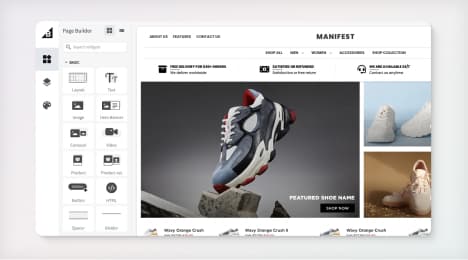
Watch Our Product Tour
See how BigCommerce helps you build and manage your online store with ease.
- Ecommerce Insights

6 Key Steps to Launch Your Online Store
Explore our Launch Foundations series to get your BigCommerce store up and running quickly.
BigCommerce helps growing businesses, enterprise brands, and everything in-between sell more online.
Understanding Impressions in digital marketing
**Definition:**Impressions are when an advertisement or any other form of digital media renders on a user's screen. Impressions are not action-based and are merely defined by a user potentially seeing the advertisement, making CPM campaigns ideal for businesses intent on spreading brand awareness.
Impressions In Digital Marketing
Digital marketing has made impression tracking significantly more quantitative than offline advertising. For example, a billboard owner has no concrete way of estimating the number of impressions his platform grants advertisers. Impression-based online campaigns, on the other hand, can measure impressions concretely, and are generally sold in terms of cost-per-thousand (CPM) impressions.
Impression tracking is a common metric for measuring the performance of most types of online marketing campaigns, including:
Pay-per-click impressions, measured against actual clicks
Number of times a meme appears on social media
On-site views of internal calls-to-action
Access of graphic materials through third-party sites, such as Pinterest or Google Image Search
Impressions generally come in two forms: served and viewable.
Served Impressions
The current standard for tracking online impressions is based on served content: whenever a marketing-related file is accessed and transmitted that activity counts as an impression. This is extremely easy to track as it relies on pure server data to count the impressions.
Counting impressions based on served content still has the 'billboard' problem, in that it's difficult to tell how much impact the content had without deeper data analysis. Also, in some cases files can be accessed without being viewable by the consumer.
As a result, ecommerce businesses purchasing impression-based advertising such as display ads have urged the adoption of more accurate systems for measuring impressions. The new viewable impressions standard seeks to address this need.
Viewable Impressions
The viewable impressions method uses data gathered from a user's device to refine the impression count by excluding cases where, in all likelihood, the content was not seen.
Viewable impression tracking can identify user behaviors which prevent ad viewing, including:
Ad-blocking software
Screen resolutions too small for the ad to appear onscreen.
Users scrolling down before the requested ad has loaded.
Broken plug-ins preventing content display.
Mobile incompatibilities such as desktop-only websites.
Minimized browser windows.
User movement between different applications.
Pages loaded in background tabs then never accessed.
Non-user interference, like malware cloaking ads
The benefits of viewable impression tracking are twofold. First, a company receives more accurate information on the number of actual impressions made. Secondly, the data collected is highly actionable and suggests improvements which can ensure greater rates of content delivery.
BigCommerce helps growing businesses, enterprise brands, and everything in-between sell more online.
Start growing your ecommerce business even faster.
High-volume or established business? Request a demo